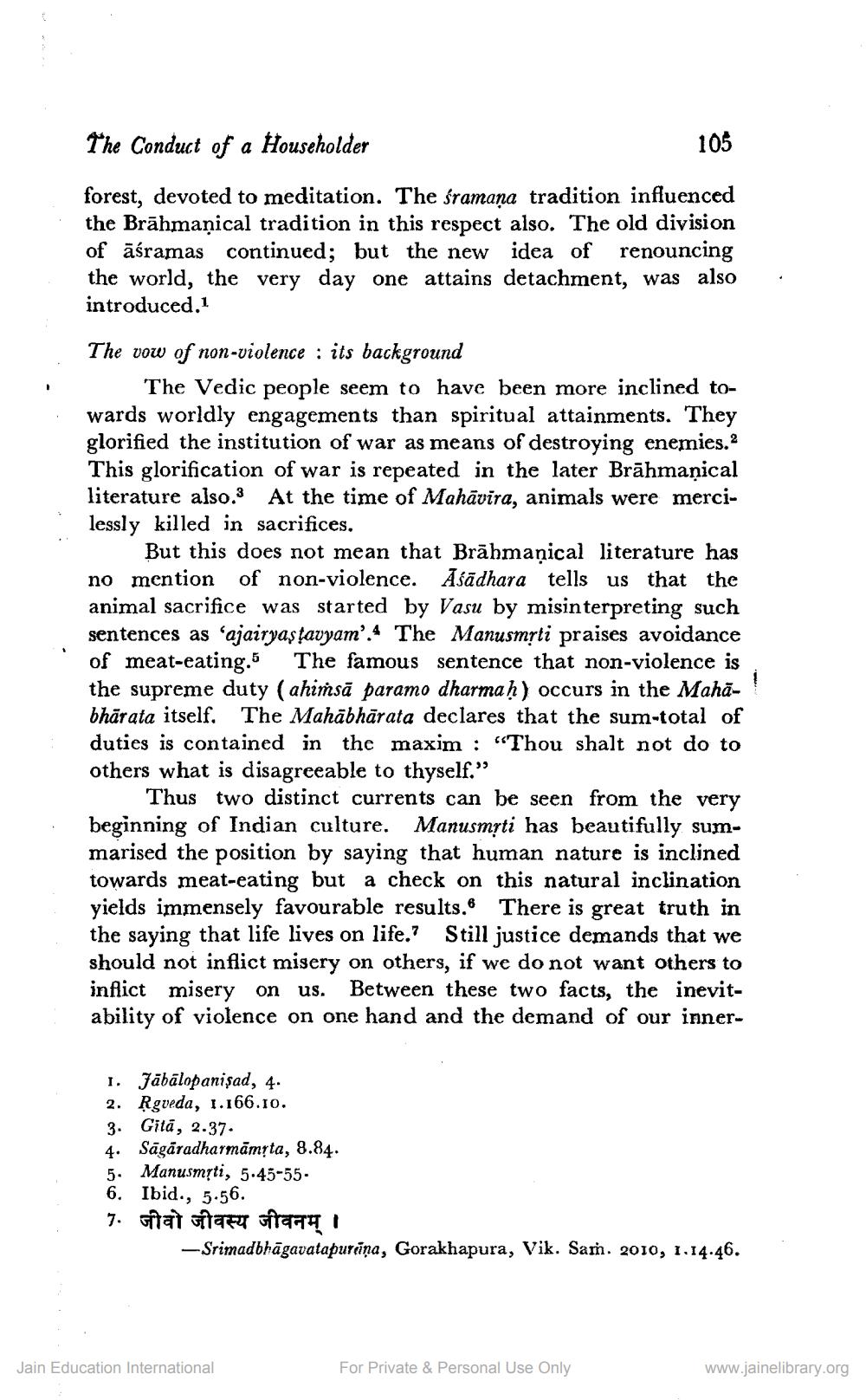________________
The Conduct of a Householder
105
forest, devoted to meditation. The framana tradition influenced the Brāhmaṇical tradition in this respect also. The old division of āśramas continued; but the new idea of renouncing the world, the very day one attains detachment, was also introduced.1
.
The vow of non-violence : its background
The Vedic people seem to have been more inclined towards worldly engagements than spiritual attainments. They glorified the institution of war as means of destroying enemies.2 This glorification of war is repeated in the later Brāhmanical literature also. At the time of Mahavira, animals were mercilessly killed in sacrifices.
But this does not mean that Brāhmaṇical literature has no mention of non-violence. Āsādhara tells us that the animal sacrifice was started by Vasu by misinterpreting such sentences as 'ajairyastavyam'.4 The Manusmrti praises avoidance of meat-eating. The famous sentence that non-violence is the supreme duty (ahimsā paramo dharmaḥ) occurs in the Mahabhārata itself. The Mahābhārata declares that the sum-total of duties is contained in the maxim : "Thou shalt not do to others what is disagreeable to thyself."
Thus two distinct currents can be seen from the very beginning of Indian culture. Manusmệti has beautifully summarised the position by saying that human nature is inclined towards meat-eating but a check on this natural inclination yields immensely favourable results. There is great truth in the saying that life lives on life.? Still justice demands that we should not inflict misery on others, if we do not want others to inflict misery on us. Between these two facts, the inevitability of violence on one hand and the demand of our inner
1. Jābālopanişad, 4. 2. Rgveda, 1.166.10. 3. Gitā, 2.37. 4. Sāgāradharmām;ta, 8.84. 5. Manusm;ti, 5.45-55. 6. Ibid., 5.56. 7. stat ogey qaal
-Srimadbhāgavatapurana, Gorakhapura, Vik. Sam. 2010, 1.14.46.
Jain Education International
For Private & Personal Use Only
www.jainelibrary.org




